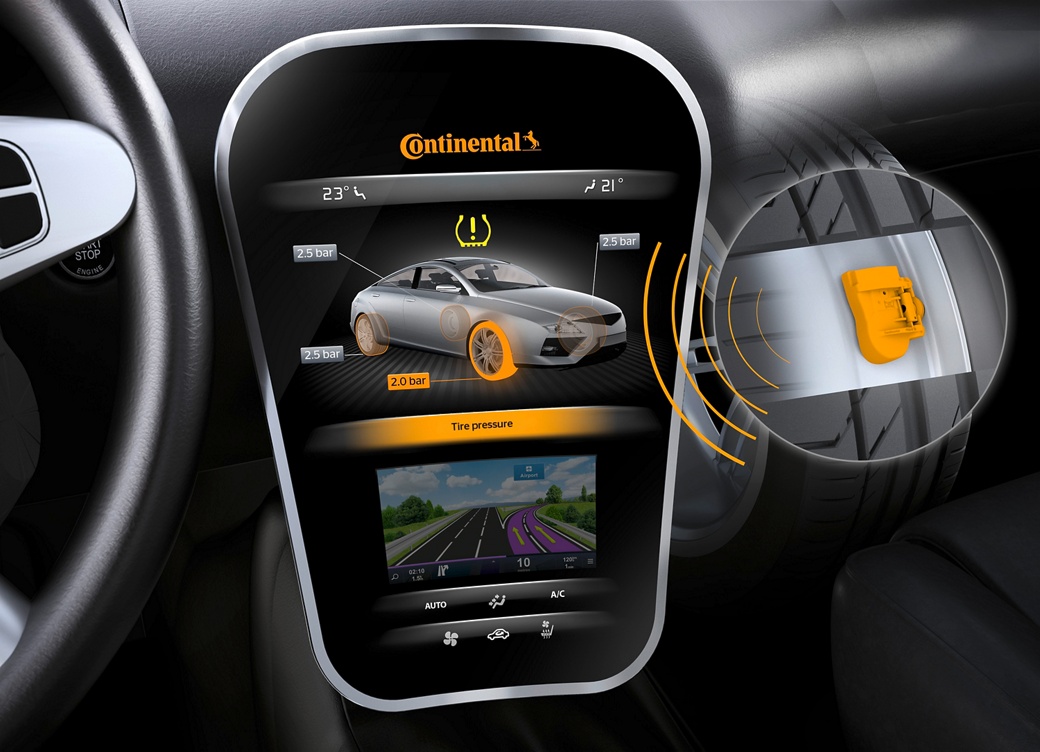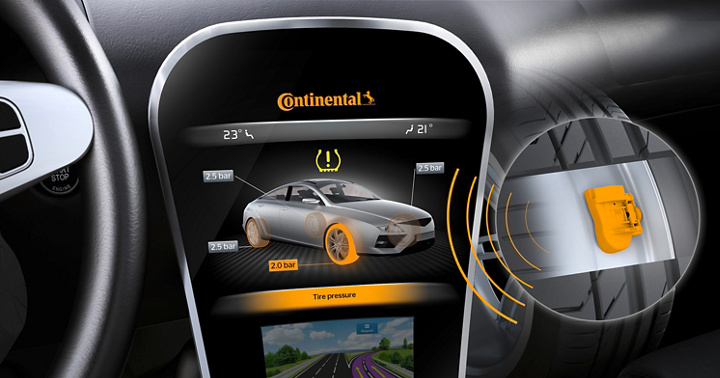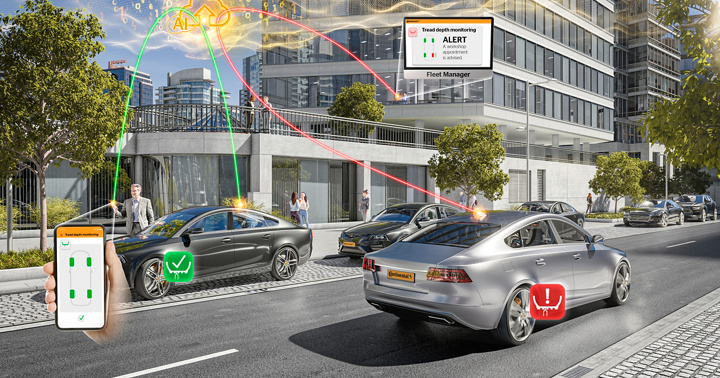The Tire Pressure Monitoring System (TPMS) measures the pressure inside a tire directly, transmits the reading and displays it. The driver is alerted of a critical situation by means of a corresponding signal.
The TPMS takes the reading directly on the wheel. Battery-fed sensors mounted on the rim and integrated into the valve measure the tire's inflation pressure and send a high-frequency signal with coded information to a receiver. Special software in the control device then processes the data received and shows it on a display on the instrument panel.
Functionality: Flexible and Reliable
TPMS software evaluates the tire data collected in different directions and thus supplies a host of relevant information about the tire. These include determination of the leakage rate and automatic information on tire inflation pressure.
Other software functions are standardized warnings when limit values are approached, an ongoing comparison of tire temperature, automated identification of tires, detection of tire pressure, driver support and spare tire checks.
TPMS also recognizes whether the vehicle is moving or standing still and adjusts the frequency of the controls to the situation in which the vehicle finds itself.
When a vehicle is moving, tire pressure and tire temperature are measured every few seconds and the readings transmitted via a high-frequency signal.
If the vehicle is standing still, on the other hand, the values are measured at longer intervals and the readings transmitted above all when a pressure change is determined.

Why we are the best fit for you!

- Optimum exploitation of a tire's performance characteristics, e.g. brake performance and best possible aquaplaning protection
- Extended tire life
- Speed-related warning signal
- Scalable functionality and modular systems architecture
- Complete spectrum of mechanical solutions
- Comprehensive integration competence
- Successful integration in the vicinity of the wheel by means of cooperation with in-house tire experts in HF simulation and validation
- Enables the OEMs to comply with the requirements of the U.S. National Highway Traffic Safety Agency (NHTSA) and the United Nations Economic Commission for Europe (UNECE)
Related Topics
Do you want to know more?
*If the contact form does not load, please check the advanced cookie settings and activate the functional cookies for the purpose of contact management.





